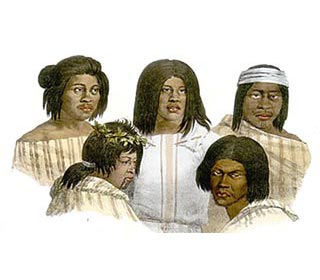Fast Facts about the History of California Indians
The climate, land, history, environment and natural resources that were available to the indigenous Indian tribes in California resulted in the adoption of the California culture. - Name of State: California
- Meaning of State name: Believed to have been derived from a 1510 book called 'Las Sergas de Esplandian' by Garcia Ordonez de Montalvo. The book centres around a mythical Spanish island ruled by a queen called 'Califia' and used for the name California.
- Geography, Environment and Characteristics of the State of California: Long mountainous coastline, central valley, Sierra Nevada on the east, southern desert basins, rugged mountains in the north.
- Culture adopted by California Indians: California
- Languages: Athapaskan, Penutian and Uto-Aztecan dialects
- Way of Life (Lifestyle): Hunter fishers
- Types of housing, homes or shelters: Wigwams and wickiups
History Timeline of the California Indians - 10,000 BC: The first indigenous people were of the Paleo-Indian culture who lived in caves or were Nomadic Hunters
- 7000 BC: Archaic Period in which people built basic shelters and made stone weapons and stone tools
- 1000 AD: Woodland period with permanent houses and farming
- 1535: Hernando Cortés explores La Paz
- 1539: Francisco de Ulloa explores the gulf of California
- 1542: Juan Rodriguez Cabrillo explores California and claims the land for Spain
- 1545: A typhus epidemic brought by the Europeans kills hundreds of thousands of natives
- 1579: Sir Francis Drake also claims California for England
- 1775: 1775 - 1783 - The American Revolution.
- 1776: July 4, 1776 - United States Declaration of Independence
- 1781: The Yuma Revolt
- 1803: The United States bought the Louisiana Territory from France for 15 million dollars for the land
- 1812: 1812 - 1815: The War of 1812 between U.S. and Great Britain, ended in a stalemate but confirmed America's Independence
- 1821: Mexico wins its independence from Spain and takes control of California
- 1830: Indian Removal Act
- 1830: 1830-1840 - Miwok-Yokut Raids into Mexican California
- 1832: Department of Indian Affairs established
- 1841: Captain John Bartleson leads first wagon train of settlers, across Utah to California
- 1846: The United States invades Mexico
- 1848: California is passed to the US with the Treaty of Guadalupe, which ended the Mexican War
- 1850: California was admitted into the Union
- 1850: The Mariposa Indian War in California, a conflict between the with Miwok and Yokut Indians and miners. Miners forced the Indians off their gold rich lands.
- 1850: The Pitt River expedition, California. Made by Colonel E. A. Stevenson, Indian Agent to establish relations with the Achomawi or Pit River, Hat Creek and Modoc.
- 1856: The Tule River War
- 1861: 1861 - 1865: The American Civil War.
- 1862: U.S. Congress passes Homestead Act opening the Great Plains to settlers
- 1864: The Snake War (1864–1868) was fought by the U.S. army against the "Snake Indians" which was the settlers term for Northern Paiute, Bannock and Western Shoshone bands who lived along the Snake River. Fighting took place in Oregon, Nevada, and California, and Idaho
- 1865: The surrender of Robert E. Lee on April 9 1865 signalled the end of the Confederacy
- 1865: 1865-1868 - Campaign against Indians in southern Oregon, Idaho (Territory) and northern California.
1872: 1872 - 1873 Modoc War in California and Oregon when led by Captain Jack Native Indians left their terrible reservation and fought for 6 months, Captain Jack was hanged - 1887: Dawes General Allotment Act passed by Congress leads to the break up of the large Indian Reservations and the sale of Indian lands to white settlers
- 1969: All Indians declared citizens of U.S.
- 1979: American Indian Religious Freedom Act was passed
History of California Indians - Destruction and Decline
The history of the European invasion brought epidemic diseases such as tuberculosis, cholera, influenza, measles and smallpox. The Native Indians of California had not developed immunities against these diseases resulting in huge losses in population. Exploitation including the leverage of taxes, enforced labor and enslavement were part of their history, taking their toll on the California Indians. |
